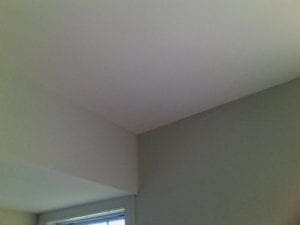Criterium Engineers offers its clients Thermal Imaging (Infrared Scanning) as a cost-effective diagnostic tool minimizing the uncertainties in purchasing or maintaining a commercial building. This well-established building inspection technology, called Thermography, allows the certified technician to see the unseen and provide hard data to minimize the risk of difficult decisions. The careful interpretation of the thermal images allows a forensic examination of a range of existing building components including:
- Building envelope water intrusion
- Exterior wall air leakage or infiltration
- Missing or damaged insulation
- HVAC equipment malfunctions
- Electrical system component overheating/ failure
- Radiant heating or plumbing leaks
- Flat roof moisture detection
- Photovoltaic solar panel defects
Without Thermal Imaging, even the most experienced building inspection engineer is dependent on visual physical evidence such as water stains; surface warping; or building component failure before identifying a serious hidden problem. Perhaps more importantly, the finding of the actual source of the problem without Thermal Imaging may require costly invasive or destructive methods consuming both time and money.

With thermal imaging. This image shows water intrusion in the dark purple, colder areas.

Without thermal imaging, no damage is visible. Both images were taken on a warm summer day.
Reducing Thermal Energy Losses
With today’s need for energy efficiencies, the use of blower door testing and other energy audit techniques has been found to be considerably more effective and accurate with using thermal imagining concurrently. This is due to the blower door testing exaggerating air leakage through faulty building envelope components.
- Document energy losses
- Discover thermal bridging in façade

The large purple spot is a cold spot in a building’s attic and may be a construction defect.

Cold air is evident at the floor, around windows, and at a wall outlet. This wall’s air barrier is not well sealed.
New Building Quality Control
Building under construction or recently built present a unique set of challenges to the new owner. Demanding occupancy schedules and concern for the future health of the building’s occupants require a disciplined approach to the commissioning and acceptance of the facilities. A full building thermal scan is often the most effective solution, as it makes the invisible visible.
- Discovery of a wide range of construction defects
- Indoor air quality problems
- Mold, corrosion, and other moisture caused issues
Thermal Imaging is Surprisingly Cost Effective
The scanning program can be limited to just one area or expanded to include the entire building, as discoveries are made. Most significantly, the field data developed can provide a very specific plan of repair based on hard evidence without any expensive invasive inspections or repairs. This specific information can create a very limited scope of work for a repair contractor, as compared to a repair estimate with many unknowns including inflated costs to cover risk and uncertainties. Early detection of problems is the best prevention of more serious and costly problems to develop.
Perhaps just as importantly, the thermal images allow the decision maker to review hard evidence in making informed decisions to authorize capital spending or necessary repairs. With specific knowledge comes confidence and peace of mind.
